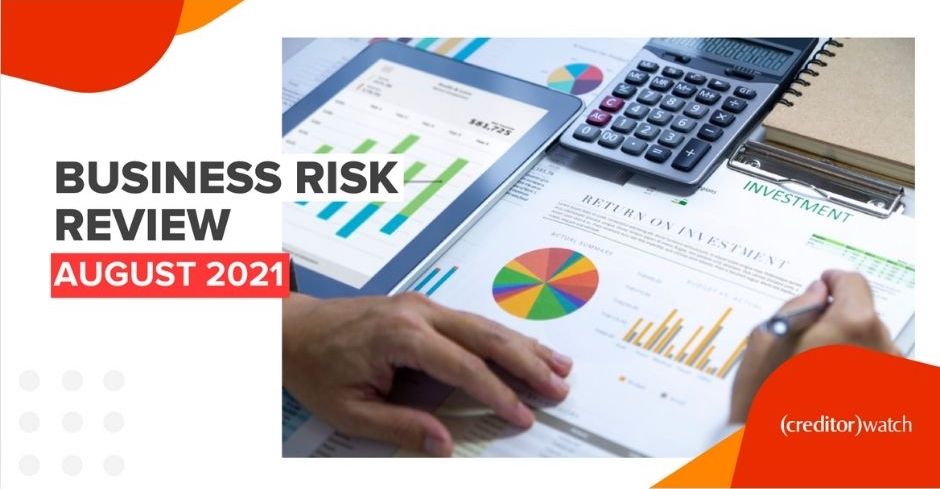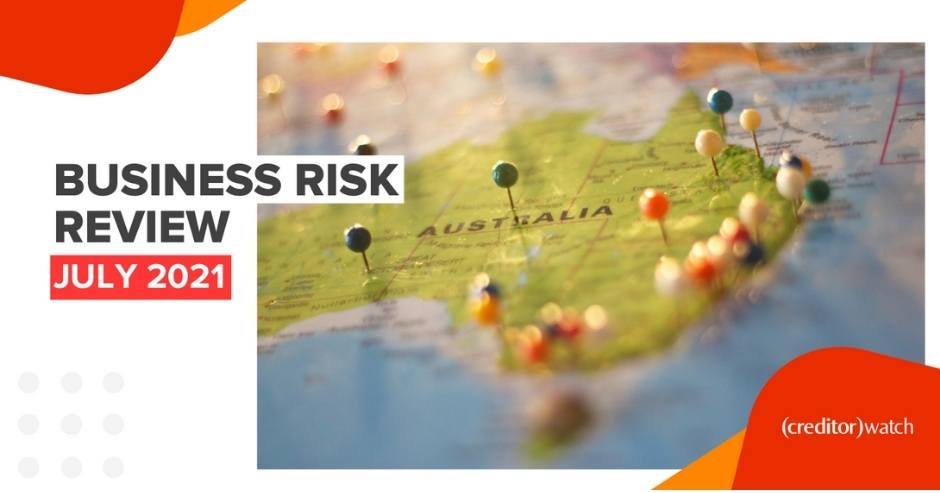Businesses paying bills faster, but COVID’s not done yet
Payment times for Australian businesses improved across most industries in December, notwithstanding seasonal adjustments, according to the CreditorWatch December Business Risk Review.
15 out of 19 industry groups have reported a reduction in the time it takes to pay their bills. But, after a holiday period marred by more COVID-19 imposed lockdowns and restrictions, what will early 2021 bring?
CreditorWatch CEO Patrick Coghlan says:
“The reduction in payment times reflects better economic conditions at the end of 2020. However, lockdowns and border closures at the end of the year due to COVID have the potential to stymie this.”
There’s a lot of potential for a quick recovery, similar to that experienced in the middle of 2020 when the original lockdowns were removed. Sectors such as Accommodation and Food Services could demonstrate a strong comeback when existing restrictions and border closures are put to bed.”
Number of days payment is overdue, by industry
| Industries | Annual % change | Month % change |
| Agriculture, Forestry and Fishing | -50% | 38% |
| Manufacturing | 32% | -7% |
| Construction | 40% | -3% |
| Wholesale Trade | 114% | -3% |
| Retail | 29% | -31% |
| Accommodation and Food Services | -41% | -8% |
| Transport, Postal and Warehousing | 110% | -53% |
| Information Media and Telecommunications | 20% | 33% |
| Rental, Hiring and Real Estate Services | 0% | -27% |
| Administrative and Support Services | 177% | -12% |
| Education and Training | 42% | -23% |
| Health Care and Social Assistance | 285% | 11% |
| Arts and Recreation Services | 78% | -3% |
External administration tracker
External administrations were up by 23.4 per cent in December, following a rise of 4.4 per cent in November. But annually, they have dropped by 32.4 per cent. This reflects the impact of the temporary moratorium on insolvent trading, which ended on 31 December.
The number of companies entering voluntary administration is likely to rise through 2021, notwithstanding new provisions that give smaller businesses until 31 March 2021 to negotiate with their creditors to allow them to devise a plan to continue trading and work out their debts.
CreditorWatch Chief Economist Harley Dale says although insolvencies are likely to rise this year, business failure – even for firms with mounting debts – are not a given and there are plenty of opportunities for struggling outfits to resolve their issues.
“It is yet to be seen whether the pattern of insolvencies will be orderly, sporadic or volatile but it appears we are not headed for a steep cliff of business failures, which are likely to take time to feed through the system.
What’s key is for businesses to work with experienced advisers and start to negotiate with creditors now. That’s going to be the best way to continue trading even through difficult economic periods. Insolvency is not inevitable,” he said.
Payment defaults continue to trend down
There was an eight per cent drop in defaults in December, after large declines in defaults of 67 per cent in November and 68 per cent in October, with an annual reduction in defaults of 45 per cent. This trend is likely to reverse as the effect of the end of the moratorium on insolvent trading works its way through the economy.
Data accurate as of January 1 2021. ASIC data subject to change.
“CreditorWatch has previously noted that December would be a watershed month for the Australian economy as it rounded out a tumultuous year in 2020.
December delivered. A variety of economic updates proved that the Australian economy ended 2020 on a far stronger footing than was feared only a few months earlier. The CreditorWatch Business Risk Review (BRR) for December 2020 confirms the better news. Businesses reopened, confidence soared and the lead-in to 2021 was looking relatively bright.
On a positive starting point, the number of days payments were overdue fell in eighteen out of nineteen industries in the December 2020 quarter compared to the September quarter. That provides a strong confirmation for the range of relatively positive updates we received regarding the Australian economy at the end of last year.
Perhaps as a prelude to the rather more tumultuous start to 2021 than was expected, the CreditorWatch BRR for December 2020 reveals that the number of days payments were overdue was higher in the December 2020 quarter compared to the December 2019 quarter for fifteen out of nineteen industries. So much for a good quarterly result! The industries who bucked the trend were: Agriculture, Forestry and Fishing; Mining; Public Administration and Training; and Accommodation and Food Services. That is simply not enough.
A fresh outbreak of COVID-19 on the Northern Beaches in Sydney in December 2020 manifested into varying degrees of restrictions across Greater Sydney. Other states and territories closed their borders to Greater Sydney and fresh cases emerged in Melbourne and regional Victoria.
Then the new, more deadly strain of COVID-19 discovered in the U.K. was detected in Brisbane. Game over. A three-day hard lock down for Brisbane was the final crush and thousands of businesses on the eastern seaboard, having jumped back into the things they do best, found they had to close again or restrict activity.
This has been a harsh blow. CreditorWatch has previously said that Australia’s economic recovery will take time and look patchy and bumpy. The CreditorWatch BRR will likely reveal the situation that businesses in areas such as retail and hospitality again do it tough in the March 2021 quarter.
The BRR for January will provide a crucial starting point for assessing how Australia’s small and medium-sized enterprises (SMEs) are faring in an unexpectedly uncertain start to 2021.
More importantly, updates on the CreditorWatch BRR over the first quarter of 2021 will be vital in providing policy makers and analysts with a starting roadmap to assess how resilient the economic recovery will be, given we were on one train track in the first half of December 2020, but then had to change gauges from the second half of the month.”
– Harley Dale, CreditorWatch Chief Economist





